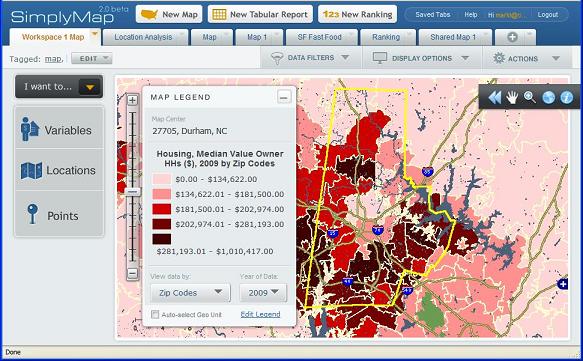 Data visualization and data management represented the core themes of the 2011 Computer Assisted Reporting (CAR) Conference that met in Raleigh from February 24-27. Bringing together journalists, computer scientists, and faculty, the conference united a number of communities that share a common interest in gathering and representing empirical evidence online (and in print).
Data visualization and data management represented the core themes of the 2011 Computer Assisted Reporting (CAR) Conference that met in Raleigh from February 24-27. Bringing together journalists, computer scientists, and faculty, the conference united a number of communities that share a common interest in gathering and representing empirical evidence online (and in print).
While the conference featured luminaries in data visualization (Amanda Cox, David Huynh , Michal Migurski, Martin Wattenberg) who gave sage advice on how to best represent data online, web based data visualization tools provided a central focus for the conference.
Notable tools that may be of interest to the Duke research (and teaching) community include:![]()
DataWrangler – An interactive data cleaning tool much like Google Refine (see below)![]()
Google Fusion Tables – “manage large collections of tabular data in the cloud” – Fusion tables provides convenient access to google’s data visualization and mapping services. The service also allows groups to annotate data online.
Google Refine – Refine is primarily a data cleaning tool that simplifies the process of cleaning data for further processing or analysis. While users of existing data management tools may not be convinced to leave their current data management tool, Refine provides a rich suite of tools that will likely attract many new converts.
Many Eyes – One of the premier online visualization tools hosted by IBM. Visualizations range from pie charts to digital maps to text analysis. Many Eye’s versatility is one of its key strengths.
 Polymaps – Billed as a “javascript library for image- and vector-tiled maps” – Polymaps allows the creating of custom lightweight map services on the web.
Polymaps – Billed as a “javascript library for image- and vector-tiled maps” – Polymaps allows the creating of custom lightweight map services on the web.
SIMILE Project (Semantic Interoperability of Metadata and Information in unLike Environments) – The SIMILE Project is a collection of different research  projects designed to “enhance inter-operability” among digital assets. At the conference, the Exhibit Project received particular attention for its ability to produce data rich visualization with very little coding required.
projects designed to “enhance inter-operability” among digital assets. At the conference, the Exhibit Project received particular attention for its ability to produce data rich visualization with very little coding required.
Timeflow – Presented by Sarah Cohen and designed by Martin Wattenberg- Timeflow provides a convenient application for visualizing temporal data.




